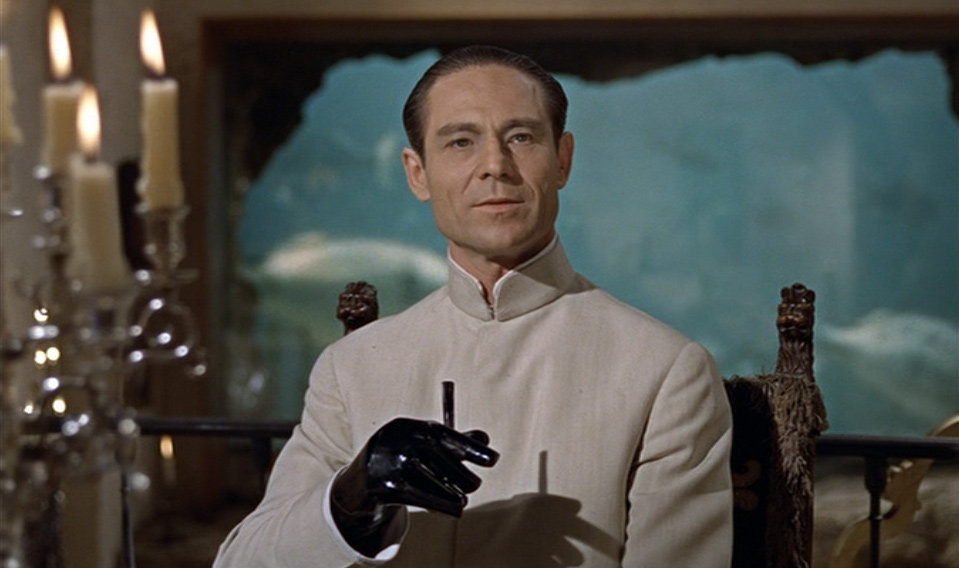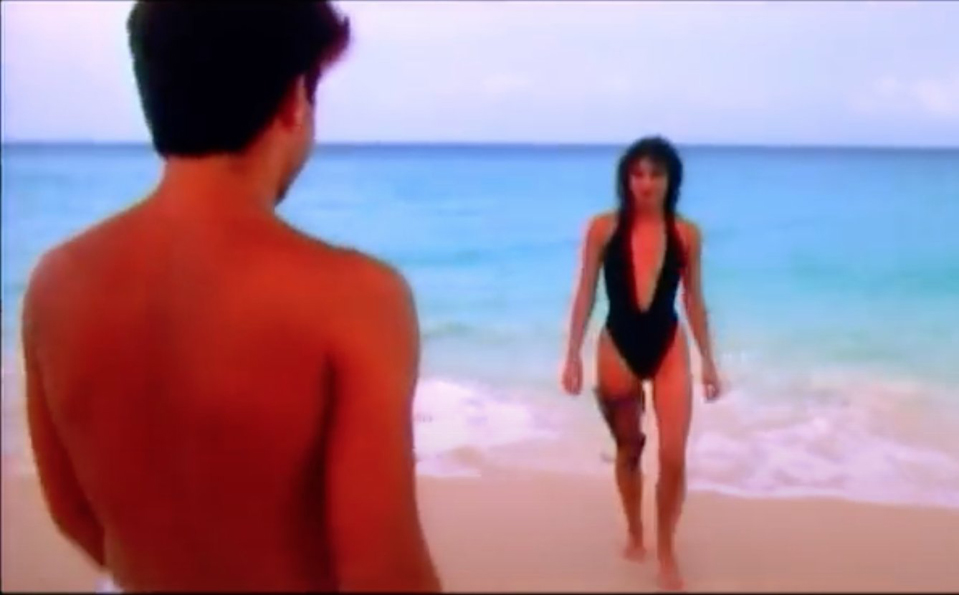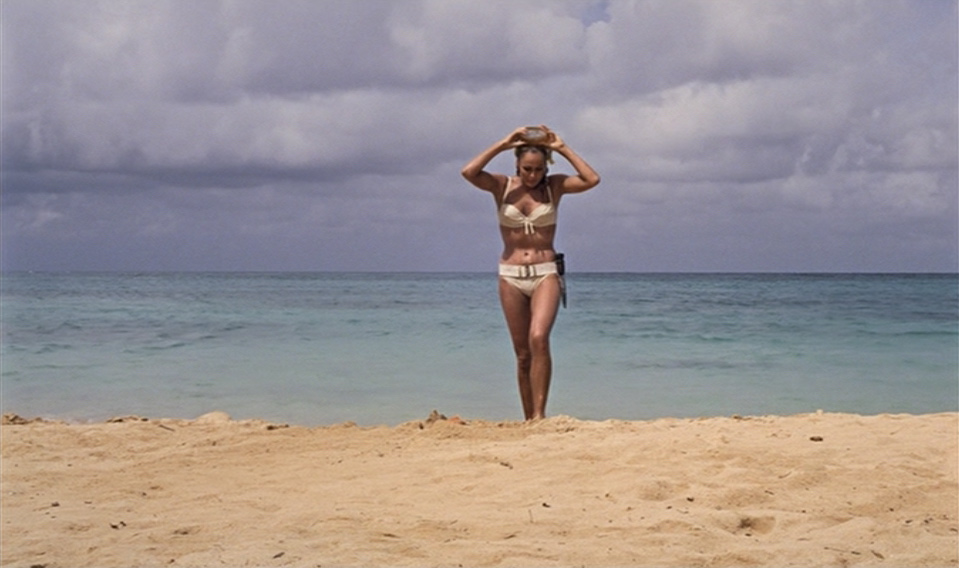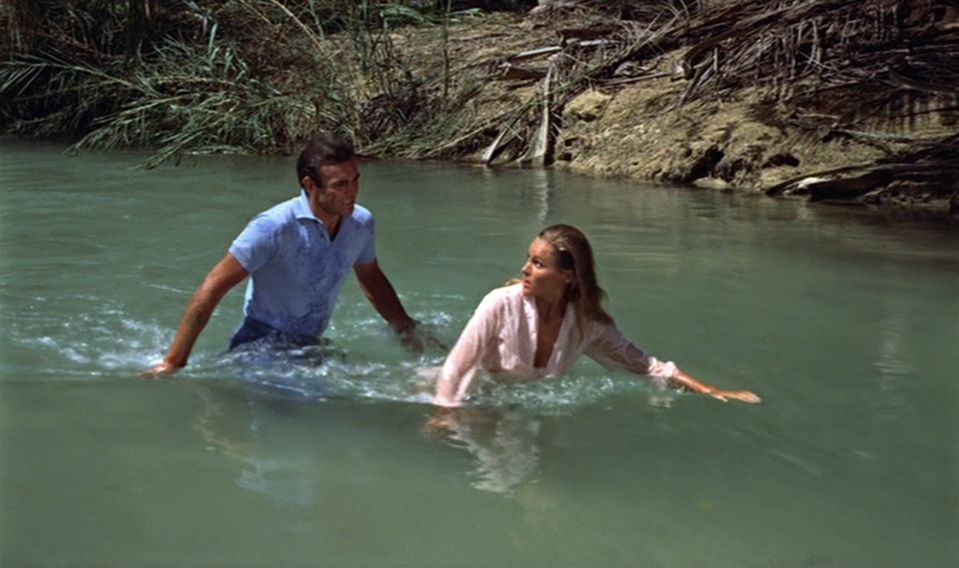Review: Dr. No (1962)
On Father’s Day, I had the pleasure of seeing the Dr. No and The Spy Who Loved Me double feature at the beautiful Paramount Theater, as part of their Summer Classic Film Series.
As far back as I can remember, The Paramount’s Summer Classic Film Series almost always manages to feature a Bond film or two each year, which has been a wonderful treat for me over the years, since I didn’t start seeing Bond films on the big screen until Moonraker in 1979. And to see them in Austin’s beautiful, 100 year-old historic theater only adds to the experience.

As it happens, I was able to catch Dr. No at a park at Hemisfair in San Antonio just a few weeks before, as part of Slab Cinema’s “Six of 007” series. The film was projected onto an inflatable screen, which sometimes billowed a bit in the breeze, and the film started while it was still daylight, so it was difficult to see at first, but even though the technical aspects weren’t the best, the experience was really about sharing in the fun of the film with other fans in a pleasant park on a lovely evening. The Paramount Theater and Slab Cinema both deserve credit for continuing to show these films for the public to enjoy together.

Dr. No feels less like a spy thriller and more like a detective story or a pulp adventure tale. And why shouldn’t it? The source novel had our hero fighting a giant squid!
The giant squid didn’t make it into the film, but there are other pulp elements that remain, including an attempted assassination using a “deadly” tarantula. Perhaps the most pulp adventure feature of all is the title character, a disfigured oriental eccentric with steel hands and plans for world domination using nuclear power to topple space rockets. Joseph Wiseman turns in a sinister performance as Dr. No, but he’s in yellowface and it’s here that I have to pause and acknowledge how problematic James Bond stories are in general and how specifically problematic this film is with regards to its racism.
Dr. No, who is an agent of SPECTRE, is an archetypical example of the Yellow Peril, which is sometimes called the Yellow Specter! This racist ideology was often featured in adventure fiction and comics, with characters such as Dr. Fu Manchu and Ming the Merciless. The Yellow Peril depicts the peoples of the Far East as an existential menace to the Western world and among other things, plays on Western sexual anxieties. In this film, this is shown by having Bond rescue Honey Ryder (Ursula Andress), who Dr. No has had tied down spread-eagle (in the book she is nude) awaiting low tide, when crabs will emerge from the sand to eat her.
Racism is already baked into the very character of Dr. No. Then the filmmakers doubled-down on the racism by having a non-Chinese actor play the character. Dr. No’s henchwoman Miss Taro (Zena Marshall) is also a Chinese character played by a white actor in yellowface. This is made more offensive, because Dr. No’s henchpersons on Crab Key are mostly Asians played by people who are clearly Asian actors. But when it came to important speaking roles, the filmmakers went with white actors.

Then there is the despicable treatment of black people in the film. Dr. No takes place almost entirely on location in Jamaica and colonialism is on full display. Every single position of power, authority, or even agency is occupied by a white person and subservient roles are all occupied by black people. The “three blind mice” assassins worked for Dr. No, as did Annabel Chung (Marguerite LeWars). LeWars is an actual Jamaican discovered by producers in the Kingston airport before filming and yet they couldn’t leave it at that and filmmakers put her in yellowface, too.
Even though Bond’s Jamaican contact Quarrel (John Kitzmiller) has enough screen time to develop some personality and even some agency, he is still clearly defined as being subservient to the white men and is made to tolerate Bond and Felix Leiter (Jack Lord) constantly barking at him. At one point, Bond snaps, “Fetch my shoes!” and I literally winced.

Maybe even more distasteful is having Quarrel speak fearfully of his belief that there is a “dragon” on Crab Key that eats unwelcome visitors. Leiter calls it a “native superstition” and Bond patronizingly rolls his eyes. When Quarrel later sees what are clearly tire or tread tracks on Crab Key, he still somehow believes it is a dragon and Bond has to paternalistically scold the “unsophisticated, primitive black man.” The dragon turns out to be a tank with a flamethrower, painted to look like a dragon in a way that would fool no one and I find Quarrel’s gullibility here to be demeaning.
As I said before, the James Bond character and stories are problematic in almost all of their forms. This is particularly true of their treatment of women. I tend to view art as being a product of its time and I’m generally able to see past offensive tropes. But the sexism (a literal cornerstone of the series and requiring much more thorough interrogation than I can provide now) and racism in Dr. No is so egregious that it would be irresponsible of me not to confront it. That said, most of my reviews (and the rest of this review) will not tend to focus on these sorts of tropes, unless it cannot be avoided. For example, in Goldfinger, James Bond, in fact, rapes Pussy Galore and that is something we cannot ignore.
With that unpleasantness behind us for now, another thing that cannot be ignored is that in 1962, Dr. No dropped James Bond onto the world like a pop culture atomic bomb and we are still feeling the effects of it 60 years later. World domination, indeed. Less than eight minutes into the first film, we hear the opening notes of the James Bond Theme and Sean Connery introduces himself as, “Bond… James Bond” in an instantly iconic scene that will be shown in classic film retrospective clips until the end of human existence.
What’s remarkable about the great impact of this film is just how modest it is – small, but with a delivery like a brick through a plate glass window. It was made for just over a million dollars at a time when that was already paltry for a studio film. Compared to future instalments, the balance sheet is spare: only one exotic location, only one major set piece, and Q (here identified as “Major Boothroyd”) gives Bond only a gun and a Geiger counter. Not exactly Christmas.
The film opens with the Head of Station J – John Strangways and his secretary being murdered. Bond arrives in Jamaica and spends the first half of the movie acting like a detective and wandering around the island inquiring about the incident. The pace is slow, but I enjoyed watching Bond work. We are also treated to details from the books, such as how Bond sets practical traps to see if anyone has searched his hotel room. For this part of the movie, Bond could be interchangeable with almost any hard-drinking pulp detective with an eye for the dames. But when he gets the upper hand on Professor Dent (Anthony Dawson), who has orders from Dr. No to kill Bond, we begin to see the real Bond – impeccably dressed and with unflappable cool, he calmly looks up from a game of solitaire, and puts two bullets into the professor without even uncrossing his legs. Cold, brutal, and cool.

The pace picks up from here. Bond and Quarrel go to Crab Key to further investigate the mysterious goings on. This is where another iconic image emerges, literally, as Bond spots a bikini-clad siren Honey Ryder walking out of the sea with a diving knife strapped to her thigh after diving for seashells.


I really like how Honey is portrayed here. When she sees Bond, rather than immediately fawning over him (as every hotel clerk in the world seems to do), she immediately pulls a knife on him and commands him to stay away. When Bond promises not to steal her seashells, she says assuredly, “I know you won’t.” She remains wary of him, but eventually sees that she has been caught up in his mess and she defers to him. She is a fit, capable woman and tells Bond of how in her past, she exacted lethal revenge on her rapist by using a black widow. She also tells him that she is well traveled, and though not formally educated, she has read the encyclopedia “through T.” I think it was a lost opportunity to not see her (literal) encyclopedic knowledge come in handy to get them out of a scrape, but instead, in what would become another cornerstone of the series, Honey is reduced to being merely a damsel in distress – a woman only there for Bond to rescue and use.
The pulp adventure continues on Crab Key as Bond, Honey, and Quarrel wade through an undoubtedly leech-infested river and hide underwater by breathing through reeds, while trying to escape Dr. No’s dangerous men hunting them down with guns and dogs.


They come upon Dr. No’s fire-spewing tank and after a brief battle in which Quarrel is killed, Bond and Honey are captured and taken to Dr. No’s lair, where they are decontaminated and locked into what amounts to be a mink-lined prison. Bond meets with Dr. No over dinner, where they verbally spar until Dr. No tires of Bond, has him beaten and thrown into a non-mink lined prison. Bond escapes, disguises himself as a technician, and thwarts Dr. No’s plan to topple the American space rocket, by causing the nuclear reactor to melt down.
Dr. No attempts to stop Bond, but during their fight, he falls into the reactor cooling tank, unable to pull himself out, because of his metal hands. Presumably, his fate was to be boiled alive, drowned, irradiated, and eventually vaporized when the reactor finally exploded. Damn. Bond was really looking for that “exceeds expectations” on his performance review.
Bond rescues Honey, they jump into a boat and escape before the reactor explodes. The boat eventually runs out of gas (oldest trick in the book), but Felix and the crew of a Coast Guard frigate come upon them and give them a tow, until Bond lets the tow line loose, so that he can make out with Honey.

Dr. No sits very high in my all time favorite Bond films. It’s a simple pulp adventure tale meant to introduce us to James Bond. The focus is on the characters, where it belongs. And I love all of those pulp elements. I find it all to be old-fashioned and exotic. The James Bond films would quickly become bigger and more sophisticated, which makes Dr. No a unique and charming introduction still celebrated, as of the day I published this review, 60 years later. Happy Anniversary, 007!

Thanks to Screenmusings.org for their database of screencaps. Their James Bond screencaps can be found here.
Thanks also to my friend Morgan Richter, who ostensibly tried to sort the problems I was having with my AI screencap selector, though I suspect she might have just been making a bit of mischief, as the problem actually got worse. I should have known, since Morgan isn’t an AI neural network programmer, but rather an actual writer and I would recommend you check out her books, blog, and YouTube content. You can start here.
Please pin, tweet, and share! Most importantly, let me know what you think in the comments below.








